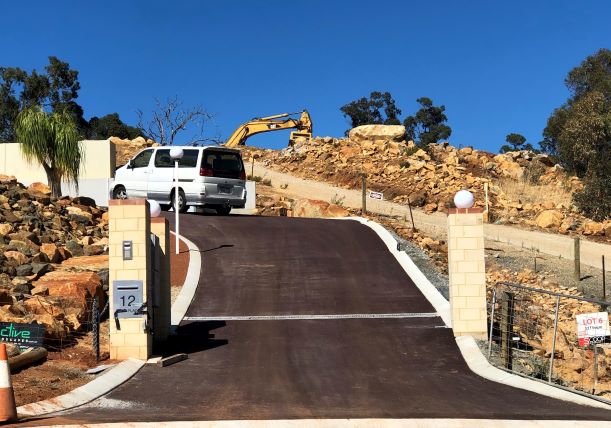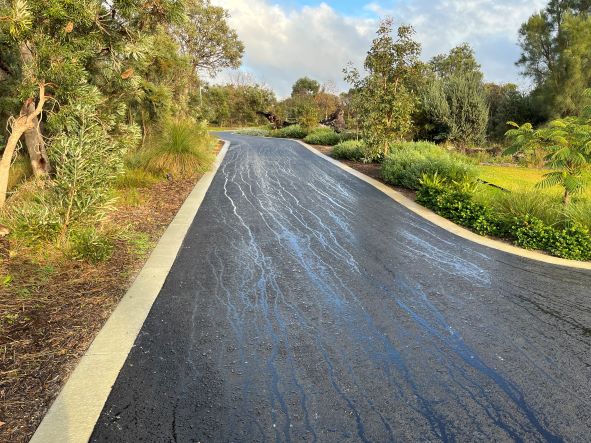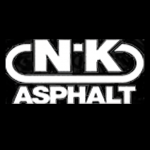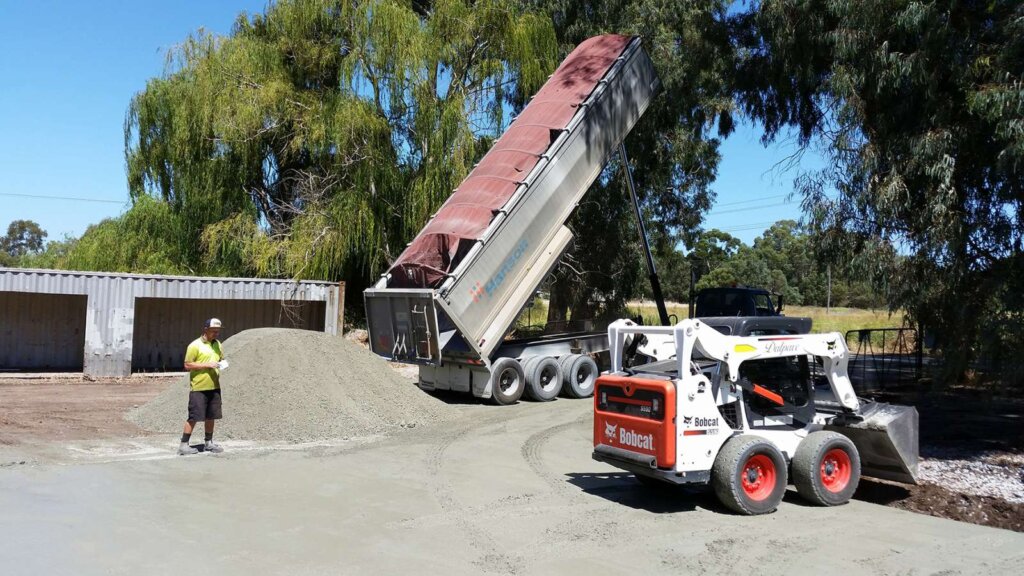Before you undertake an asphalt surfacing project in Australia, take the time to understand the main types of asphalt that are used and why. This knowledge is valuable during the planning process and beyond, particularly when it comes to considering future repairs and maintenance.
What is asphalt?
Asphalt is a surfacing material which consists of a mixture of aggregate (gravel and sand) and bitumen binder.
Asphalt in Australia
Asphalt is the most used surfacing material in Australia, with annual asphalt production averaging approximately 10 million metric tonnes. Its popularity is due to its value for money compared to other solutions; asphalt also offers superior durability when exposed to natural variables.
The most common asphalt surfaces in the country are roads, which should come as no surprise considering there are over 800,000 kilometres of roads across our nation.
Other common asphalt surfacing projects, which are provided by NK Asphalt, include asphalt surfacing for car parks, driveways, commercial areas, and hardstands.
Popular types of asphalt in Australia
Hot mix asphalt (HMA)
Hot mix asphalt is the best asphalt material to use for popular surfacing projects (such as a hot mix driveway)
It is the result of dried aggregate (granite or laterite/gravel) and bitumen binder, which is mixed and heated to high temperatures (approximately 150–170°C) before being transported for application on site.

A hot mix asphalt driveway entrance on a hill, featuring a stylish gated entrance and white kerbing.
Why choose hot mix asphalt?
NK Asphalt uses hot-mix asphalt for all our projects to meet exacting relevant standards and specifications. Some of the benefits include:
- Ease of use: HMA is mixed at high temperatures, which makes it easy to pour and spread over large surfaces.
- Low maintenance: Compared to pavers, concrete or similar surfacing materials, HMA rarely requires repairs. On the unlikely occasion maintenance is necessary, the solution is far easier due to its granular nature.
- Weather resistant: Hot mix asphalt’s malleability helps it to respond to varying temperatures without cracking or breaking down. Given the high temperatures experienced here in Perth, this is a valuable benefit.
Types of hot mix asphalt
There are a few different types of HMA, each with unique properties and preferred applications. They include:
- Dense-graded mixes: These mixes are mostly impermeable, making them a commonly used mix for Australian driveways, roads, and carparks.
- Stone matrix asphalt: This mix is a gap graded HMA designed to increase rutting resistance. It’s commonly used on highly trafficked roadways due to its durable nature and ability to soften road tyre noise.
- Open-graded asphalt: Unlike dense-graded asphalt, this type of mix is highly permeable, making it ideal for stormwater management. The permeable nature of the mix allows for water to easily drain through the asphalt into a layer of aggregate below, acting as a natural filter.

An example of effective water run-off over this new hot mix asphalt surface.
Warm mix asphalt (WMA)
Similar to hot mix asphalt, warm mix asphalt is heated during production, but to a lower temperature. This slightly lower temperature is achieved by mixing in water or additives, which allow the mix to remain more workable and be transported longer distances.
Like HMA, warm mix asphalt is durable and can withstand heavy traffic loads. However, HMA remains the superior option when it comes to long-term durability.
Cold mix asphalt (CMA)
As the name suggests, cold mix asphalt isn’t heated throughout the production process. This allows for the asphalt to be easily transported and laid while at a low temperature.
Compared to hot or warm mix asphalt, cold mix asphalt isn’t particularly durable. Patching and asphalt repairs are some of the few jobs that CMA is suitable for, and even in these circumstances it should only serve as a temporary repair solution.
It’s recommended that CMA is replaced with hot mix asphalt to ensure long-term durability.
Contact us for a quote on different types of asphalt
If you’d like to learn more about the types of asphalt available for surfacing projects, browse our frequently asked questions page here.
We also provide a free measure and quote to help get you started. Get in touch today if you have a project between 150m2 and 50,000m2 in Perth or a nearby rural area.
share


